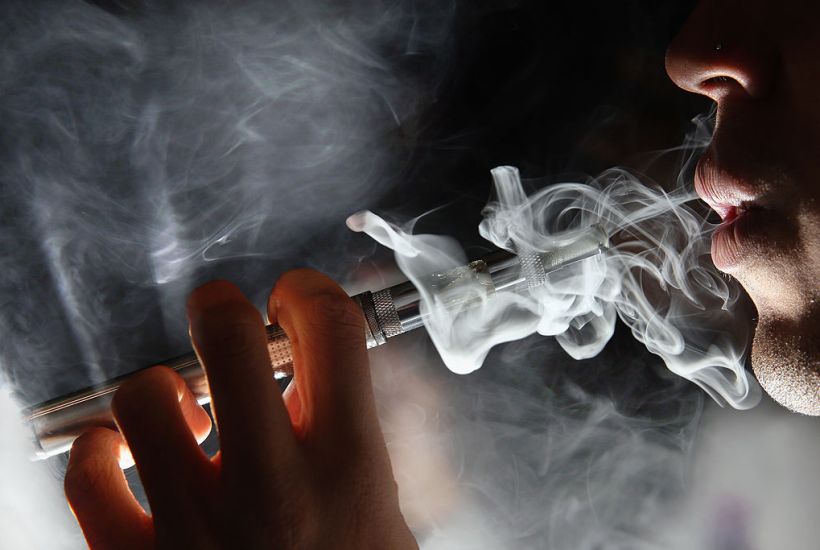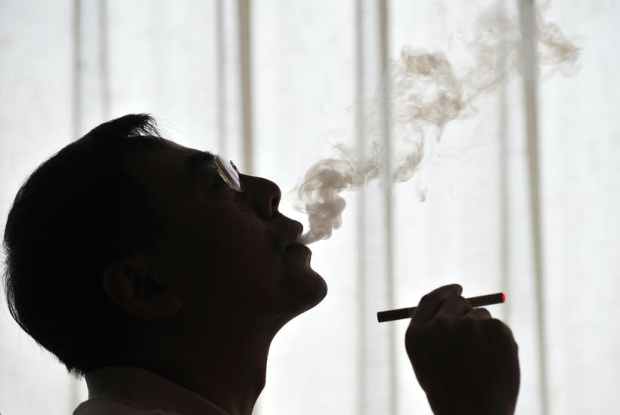The current House of Representatives inquiry into the legalisation of personal vaporisers should be welcomed and not criticised, as tedious, tendentious public health fascist Simon Chapman whinged in the Sydney Morning Herald yet again last week. This inquiry is a response to an international consensus of independent public health bodies that vaping is not only a substantially safer alternative to smoking cigarettes, but that tobacco smokers should be advised to switch to vaping as an effective cessation strategy.
Vapes (sometimes, incorrectly, called e-cigarettes) supplied with small amounts of nicotine dissolved in water, are legal in almost every developed nation and have been for years. Since their introduction, over 6 million European cigarette smokers have given up their habit by switching. Numerous case studies have proven not only that there is been no evidence of long-term health risks, but that they are not being taken up by non-smokers. These findings directly contradict alarmist claims that vaping will be embraced by youngsters because of its ‘cool’ or glamorised image.
The Royal College of Physicians, the oldest and most respected medical association in the United Kingdom, and not some fringe group as claimed by Chapman, found that nicotine vapourisation is at least 95 per cent safer than smoking combustible tobacco. When tobacco is burnt, nicotine is released alongside carcinogenic compounds which cause a build-up of tar in the human lung. Vapourising nicotine avoids this entirely and can be conducted using solutions with controlled nicotine concentrations determined by smart regulations. This year, a long-term, cross-sectional study in the Annals Of Medicine even found a drastic reduction in the build-up of cancer-causing chemicals in the lungs of former cigarette smokers who switched completely.
So why then does Australia remain well behind the curve? And why do vaping prohibitionists like Simon Chapman, continue to parrot discredited claims that these products should remain illegal because their long-term risk is not known, despite failing to produce a single study demonstrating any significant, long-term health risk? For all these claims, Chapman and others cannot side-step the central hypocrisy that a product which is at least safer than proven carcinogenic tobacco cigarettes remains illegal and unregulated in Australia despite the latter product continuing to be sold legally across the counter.
Simon Chapman makes reference to compounds released when nicotine solutions and their flavouring agents are vaporised – speculating that the full risk of inhaling these is not known. In doing so, he implicitly acknowledges that no risk has arisen despite millions of adults using the product since 2010. He skirts around the problem by pointing out that the full-risk of tobacco smoking and its potential to cause cancer was not known in the early twentieth century until decades later. This ignores the obvious – that scientific and medical risk-detection technology has improved exponentially since then, allowing us to trace the build-up and effects of chemicals in a manner which was impossible during smoking’s heydey. Chapman also fails to explain why the solution to the alleged unknown risks of vaping is prohibition people continuing to smoke where the risk is proven.
But the case for legalised vaping is not only scientific, it is also pragmatic. Despite remaining illegal, vapers continue to import and even self-mix their own nicotine solutions. These unregulated products pose a significant risk to consumers and only legalisation accompanied by a regulatory framework can ensure that consumers can stay informed and vape safely. The truth is that we cannot always trust or rely on our health agencies, including the Therapeutic Goods Administration which continues to classify nicotine as a ‘poison’… unless it is consumed through a cigarette, of course.
In their submission to a recent Inquiry into the TGA’s operation, a coalition of international academics and researchers noted that the TGA had repeatedly ignored evidence of vaping’s role as a quit-smoking aid and had misconstrued or placed undue emphasis on relatively anecdotal incidents in pushing their line that the solutions should stay illegal. In one instance, they even cited the suicide of someone who had deliberately injected a full syringe of pure nicotine as evidence of the danger of nicotine, despite the scientific consensus that nicotine is no more harmful than caffeine, which is why we promote nicotine replacement therapies like gums and patches.
These unaccountable organisations and the bureaucrats pushing their line are usually funded by taxpayers, at the behest of our taxes, including the substantial tax paid by tobacco smokers. Governments love tobacco because it is relatively inelastic in price and offers a veritable cash cow. In this year’s budget, Canberra hiked tax from ‘roll-your-own’ tobacco by over $315 million – a move set to hurt the very poorest smokers rather than offering them any real strategy or alternative to minimise their health risks.
It is high time that we caught up with the rest of the world and legalised safer alternatives for the sake of our smokers and their families and we commend the House of Representatives for committing to an open and transparent inquiry.
Support the campaign to save smokers’ lives by legalising safer alternatives at legalisevaping.com.au
Satyajeet Marar is a Research Associate with the Australian Taxpayers’ Alliance and the Director of Tobacco Harm Reduction Now.
Got something to add? Join the discussion and comment below.
Got something to add? Join the discussion and comment below.
Get 10 issues for just $10
Subscribe to The Spectator Australia today for the next 10 magazine issues, plus full online access, for just $10.


























Comments
Don't miss out
Join the conversation with other Spectator Australia readers. Subscribe to leave a comment.
SUBSCRIBEAlready a subscriber? Log in